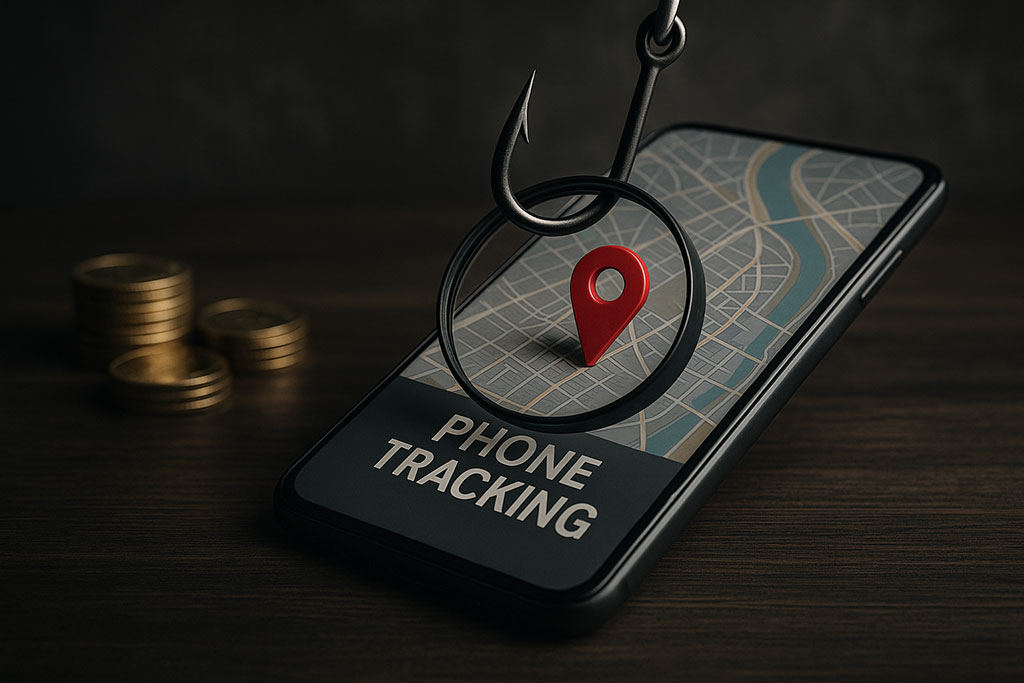
If you’re a principal architect, project manager, or ops lead at a Salt Lake City design firm, your phone is probably doing double duty—calls, BIM updates, client texts, job site photos, login approvals. But here’s the issue: all that convenience makes you a prime target.
Spyware and phone tracking are becoming disturbingly common. And for architecture firms that handle sensitive client data, proprietary design work, and multi-million-dollar bids, a compromised mobile device could be a direct line into your entire operation.
How Phone Tracking Works:
Architects and designers often don’t realize how exposed their devices are. Here are the common methods we see targeting Salt Lake firms:
Spyware Apps
Disguised as legitimate tools, these apps monitor your calls, texts, app usage, and even your microphone. They can be installed by anyone who briefly accesses your phone.
Phishing Links
You get a text about a shared drive update. You click. Without knowing, tracking software installs silently.
Location Sharing
Many BIM and project management apps default to background location tracking. Left unchecked, they become access points.
Stalkerware
These apps are hidden in plain sight—often disguised as file managers or system tools. They’re difficult to detect but easy to buy.
None of these require elite hacking skills. They’re marketed as employee or child monitoring tools and used in business sabotage more than you’d expect.
Why This Matters Deeply To Architecture Firms
If your firm designs educational buildings, healthcare spaces, or government infrastructure—your phones hold blueprints, credentials, financials, and often direct links to cloud storage.
A breach can mean more than just financial loss. It can mean:
- Leaked client presentations
- Exposed bid data during a competitive RFP
- Credential theft that spreads through your network
- Lost trust with your most important partners
According to the Verizon DBIR, small and mid-sized businesses suffer an average loss of $120,000 per data breach. That’s a lot of renderings and RFIs down the drain.
Signs You Might Be Tracked
Here’s what to look for on your phone:
- Fast battery drain, even when idle
- Unfamiliar apps or icons
- High data usage
- Glitches or lag during simple tasks
- Static or echo during calls
Individually, these might be nothing. But together? It’s time to investigate.
How To Protect Your Phone—And Your Firm
- Run A Security Scan
Use a vetted security app that can detect stalkerware and malware in real time. Set up notifications for any new installs.
- Lock Down Permissions
Audit your apps. Limit camera, mic, and location access—especially on jobsite photo apps and team chat tools.
- Keep Your OS Updated
Most mobile vulnerabilities come from outdated software. If you're still running last year's OS, patch it now.
- Factory Reset If Needed
If spyware is confirmed and won’t uninstall, back up your data and reset the device. Then change all related passwords.
- Use MFA And Biometric Locks
Enable multifactor authentication for everything tied to client work. Protect your project management platforms, email, and design tool logins.
Your Phone Is Your Command Center. Treat It Like One.
Your mobile device is a sketchbook, file server, jobsite camera, and client portal all in one. You wouldn’t leave your plotter or server unsecured—don’t leave your phone open either.
At Qual IT, we help Salt Lake City architecture firms lock down every endpoint—from phones to BIM workstations. Our cybersecurity assessments highlight vulnerabilities you might not even know exist.
Click here to schedule your FREE Network Risk Assessment today.



